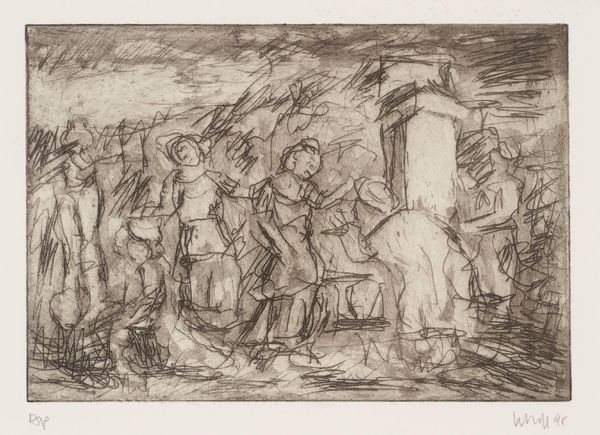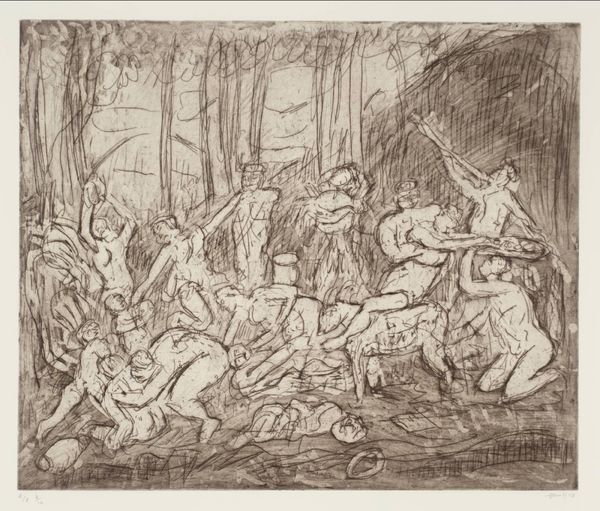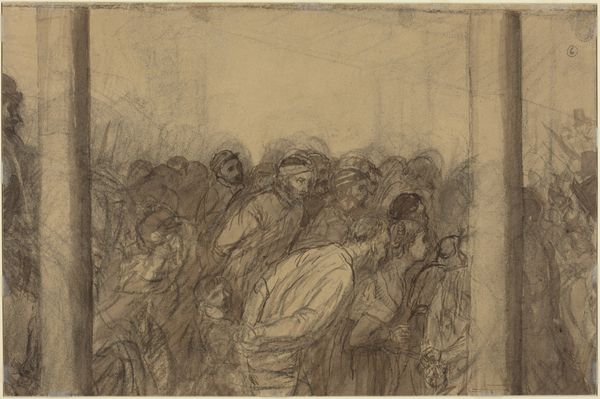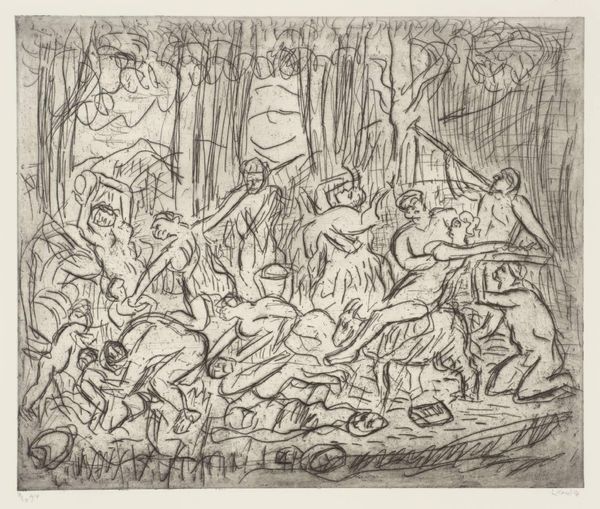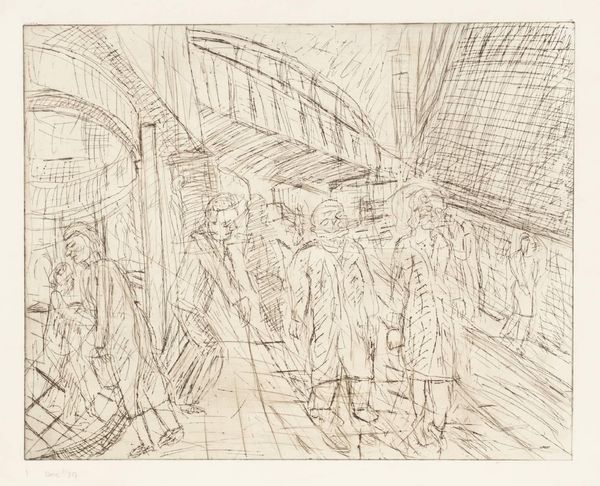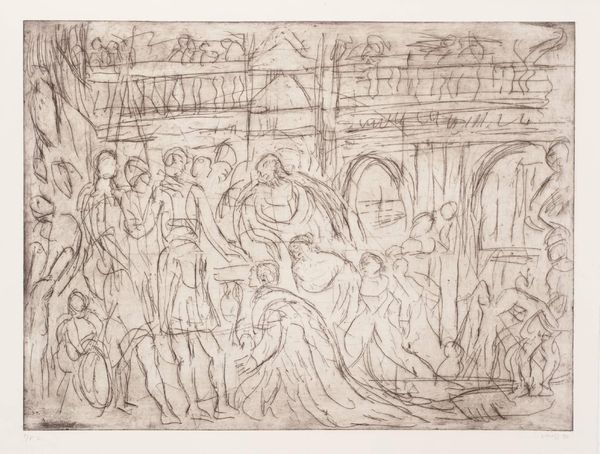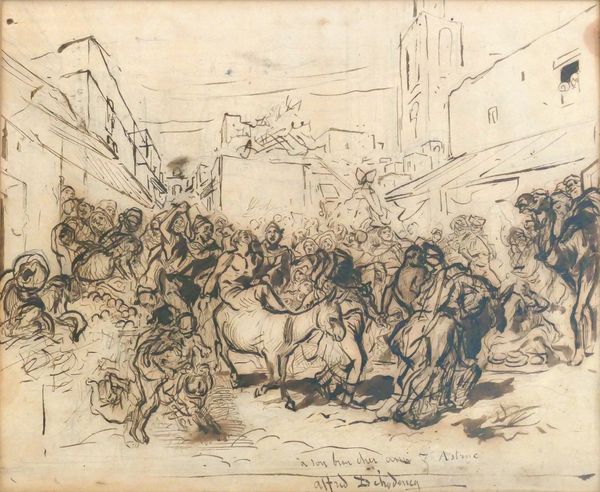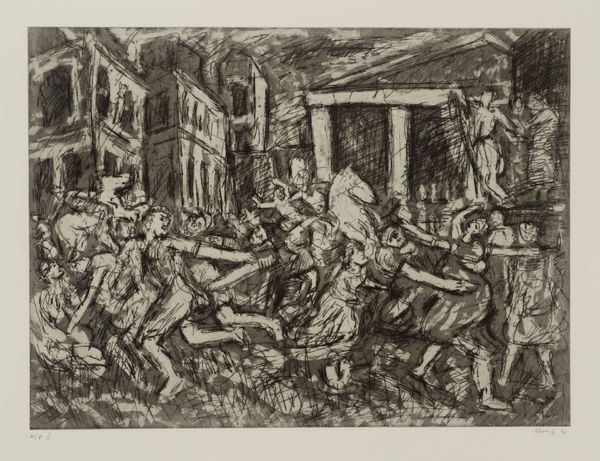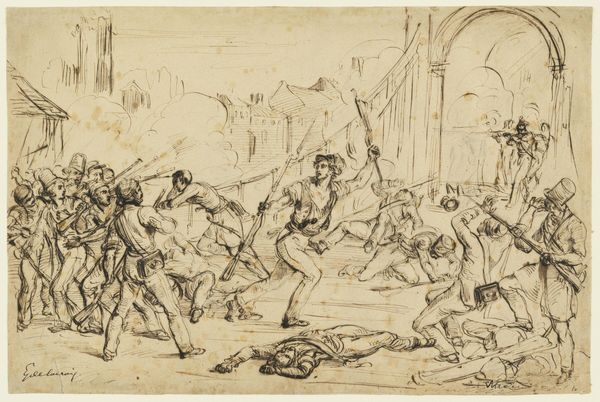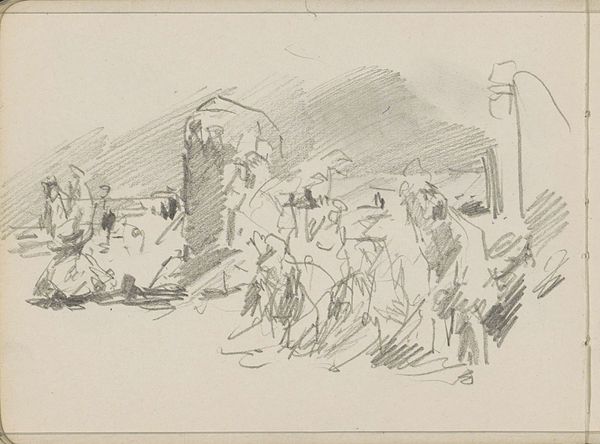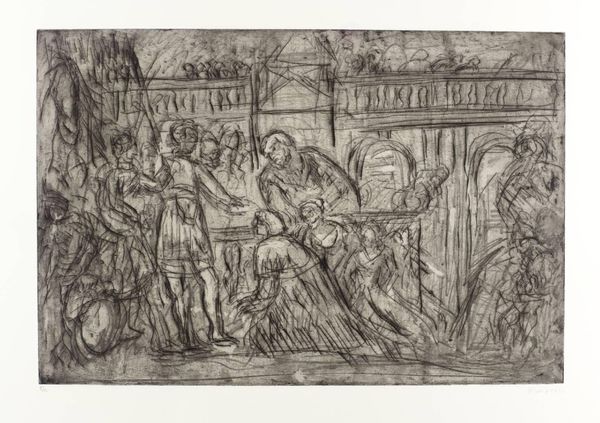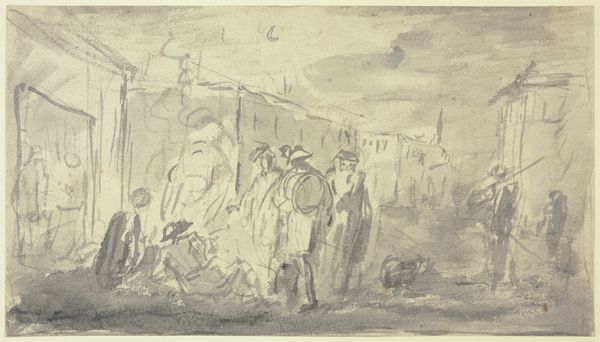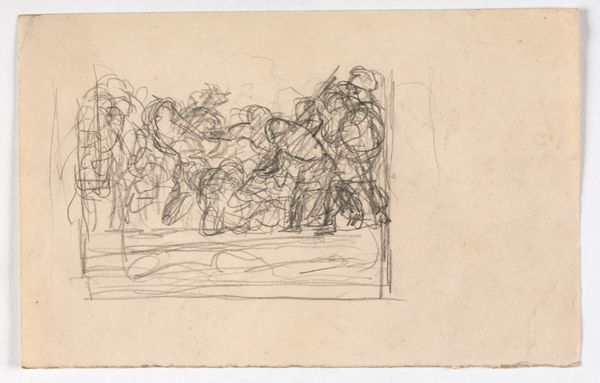
Copyright: © Leon Kossoff | CC-BY-NC-ND 4.0 DEED, Photo: Tate
Curator: Welcome. We are looking at "The Rape of the Sabines (1)" by Leon Kossoff, now in the Tate Collections. Editor: It feels raw. The frantic energy practically leaps off the page. What was Kossoff aiming for here? Curator: Kossoff, born in 1926, often worked with very tactile materials and processes. Look at the density of the lines. It speaks to a kind of brutal directness in representing this scene. Editor: Yes, I see it. The image is a whirlwind of bodies, echoing classical depictions but rendered with such anxiety. It's a potent symbol of violence, isn't it? The historical weight amplified by the medium. Curator: Precisely. Kossoff’s printmaking feels very grounded. It speaks of labor, of the artist's hand directly shaping our understanding. Editor: The symbolism of capture and disruption is so clear, and yet Kossoff's mark-making brings a vital contemporary lens. It's quite unsettling. Curator: It is a powerful example of how revisiting old themes can allow for new meanings. Editor: Definitely. This image will linger with me.
Comments
tate 8 months ago
⋮
http://www.tate.org.uk/art/artworks/kossoff-the-rape-of-the-sabines-1-p11725
Join the conversation
Join millions of artists and users on Artera today and experience the ultimate creative platform.
tate 8 months ago
⋮
This print is one of many etchings executed by Leon Kossoff in response to, and literally in the presence of, oil paintings by old masters; in this case The Rape of the Sabines, 1637, by Nicolas Poussin (1594-1665), owned by the Metropolitan Museum of Art, New York. Tate owns two prints by Kossoff after this Poussin painting (Tate P11725-6). The artist’s ability to explore a number of separate responses while making drawings and prints from a single subject is illustrated in these etchings. This print was published in an edition of twenty with ten artist’s proofs; Tate owns number three of the artist’s proofs.
